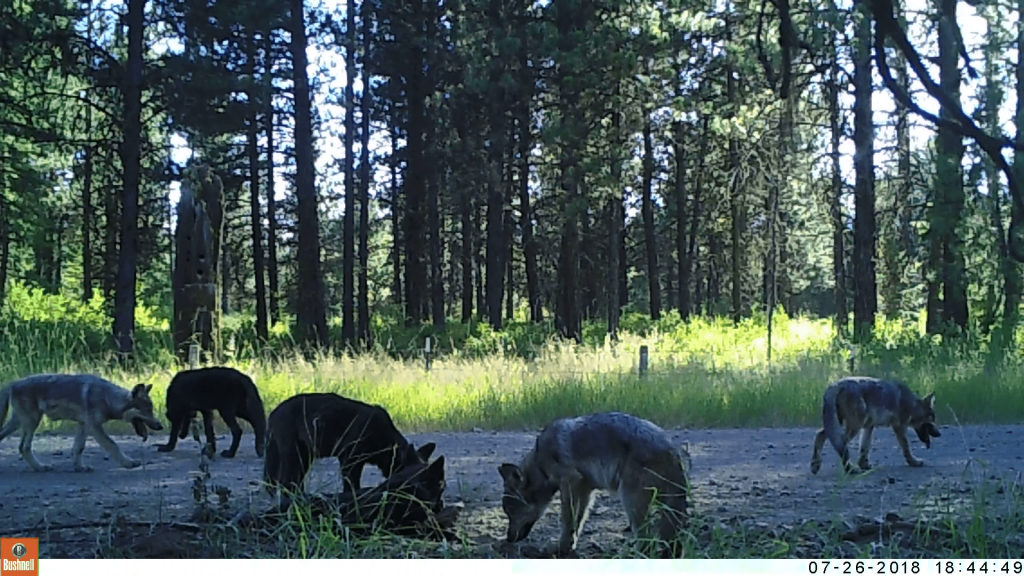Inslee Tells WDFW To Write New, Stricter Nonlethal Wolf-livestock Conflict Rules
Bowing to out-of-state advocates, Gov. Jay Inslee again stepped into wolf management in Washington, telling the Fish and Wildlife Commission to begin making new rules and policies around wolf-livestock conflicts ahead of the 2021 grazing season.
“We must move more quickly and decisively to institute practices that will avoid the repeated loss of wolves and livestock in our state,” the two-term governor running for a third wrote in a letter today to Commission Chair Larry Carpenter.

Earlier this summer the citizen panel had denied a petition from the Center for Biological Diversity of Arizona, Cascadia Wildlands of Eugene, Oregon, Western Watersheds Project of Idaho’s Sun Valley region and WildEarth Guardians of Sante Fe, New Mexico “to place enforceable constraints on when, where and how lethal removal may occur” by codifying preventative measures.

The commission rejected that approach as too shackling.
The groups then took their case to the governor and today he sided with them, which they called “a necessary step in cleaning up the mess the Department has made of wolf management.”
“WDFW just learned of the Governor’s decision and will be reviewing the details on Tuesday as Friday is a state-mandated furlough day and Monday is a holiday. We will work with staff and the Commission beginning next week on our actions,” said a spokesman late this afternoon.
There was stronger pushback from Rep. Joel Kretz (R-Wauconda), whose district hosts most of the state’s wolves.
“I’m trying to decide whether to drop the nuclear bomb or temper it a bit,” he said this evening.
“I’m going to temper it a bit.”
Reading through Inslee’s four main points (see below), he agreed with the first, standardizing range riding, and third, action plans for trouble spots.
“WDFW has not done a good job on that,” Kretz said.

But he took umbrage with other points, especially lethal removals.
“The problem is we’re not doing it quickly enough” to head off more depredations, Kretz said.
He considered Inslee’s directives disrespectful to those who’ve worked on Washington wolf management issues and those affected by them in the four-county area.
“Why placate [CBD’s] Amaroq Weiss in Petaluma, California?” Kretz wondered.
He said that more rule-making would make everything more “cumbersome.”
Wolf advocates have been critical of lethal removals in Northeast Washington, specifically around a northern Stevens County livestock producer’s herd, grazed in summer on public lands in the mountains above the Upper Columbia.
WDFW’s actions are guided by hardwon protocols developed with instate stakeholders, but the mostly non-Washington organizations have been working a number of fronts to get the agency to change its management strategies, including multiple state superior court lawsuits that WDFW has prevailed in, back page ads in The Seattle Times Sports page last weekend and going to Inlsee.


In his letter, even as Inslee said he appreciated WDFW’s and the Wolf Advisory “Board’s” work “to affirm of the importance of the livestock industry to the state, and to improve policies and outcomes in specific areas where there is chronic depredation and annual lethal removal,” he said that “based on experience in the Rocky Mountain states, the potential for future depredations and lethal control actions, under our existing framework, remains unacceptably high.”

He asked WDFW to come up with “clear and enforceable measures” that yield:
- Standardized definition and requirements for the use of range riders;
- Requirements for use of non-lethal deterrents most appropriate for specified situations (wolf population and range, size and location of livestock operation, terrain and habitat, history of depredation);
- Action plans in areas of chronic depredation to end the need for annual lethal removal; and,
- Compliance measures where livestock operators do not implement the required non-lethal measures.
Last year, following an active summer of wolf removals due to chronic livestock depredations, Inslee directed WDFW to stress nonlethal measures in the Kettle Range of northern Ferry County.
This year has seen some issues there, but the hot spot has been to the east with the Wedge Pack, which was eradicated after a series of calf attacks.
Last year, four of the state’s 28 packs, 14 percent, were involved in livestock depredations, while in the Northern Rockies, typically 20 percent are.
